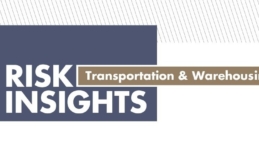Workers’ Compensation Experience Modification Factor
Understanding your business’ Workers Compensation Modification Factor and the data used helps you identify ways to minimize your business costs. A key to understanding your workers’ compensation premium is the experience modification factor, also known as your mod. See below to dentify ways to minimize your workers’ compensation premium.
Who calculates the mod factor?
Most states use the National Council on Compensation Insurance (NCCI) to collect data and calculate the experience modification factor. NCCI is a private corporation funded by member insurance companies. However, the following states have their own independent rating bureaus that are separate from the NCCI: California, Delaware, Indiana, Massachusetts, Michigan, Minnesota, New Jersey, New York, North Carolina, Pennsylvania and Wisconsin. Texas is in the process of transferring from an independent bureau to the NCCI system.
How is a mod calculated?
The process of calculating the experience modification factor is complex, but the underlying theory and purpose of the formula is straightforward. Your company’s actual losses are compared to its expected losses by industry type. The formula incorporates factors that account for company size, unexpected large losses and the incidence of loss frequency and loss severity to achieve a balance between fairness and accountability.
How does my mod affect my premiums?
The mod factor represents either a credit or debit that is applied to your workers’ compensation premium. A mod factor greater than 1.0 is a debit mod, which means that your losses are worse than expected and a surcharge will be added to your premium. A mod factor less than 1.0 is a credit mod, which means losses are better than expected, resulting in a discounted premium.
What is the experience rating period?
The mod is calculated using loss and payroll data for an experience rating period. The experience rating period typically includes data for three policy years, excluding the most recently completed year. For example, if your anniversary rating date is January 1, 2015, the experience period is 2010 to 2013. 2014 would be excluded.
Three years of data is used to provide a more accurate reflection of the losses, smoothing out the impact of any exceptionally bad or good year for losses.
Both actual and expected losses are divided into a primary and an excess portion in what is called a split rating method. Primary losses are designed to be an indicator of loss frequency (the number of losses) and are used at their full value in the mod formula. Excess losses are an indicator of loss severity (the amount of each loss) and are weighted in the formula so that they are less important. The emphasis of loss frequency over loss severity in the formula reflects the fact that loss frequency is a more actuarially significant indicator of risk and can be improved through proactive loss control programs.
The primary amount of each actual loss is the first x dollars of each claim, where x is determined by the split point that applies to the state and effective date. Excess losses—the amount of each loss that’s more than x—measure severity. Very large losses are also capped at levels that vary by state. This minimizes the impact that any single claim can have on your premium. In approved states, medical-only claims figures are reduced by 70 percent.
In most NCCI and some independent states, the split point is currently undergoing a multi-year transition from to better correlate with claim inflation. The process of transitioning to the new split point began in 2013, with an increase in the split point from $5,000 to $10,000 in most states. In 2014, the split point increased to $13,500 in most states. In 2015, the split point increases to $15,500 plus an adjustment for claim inflation. The split point will continue to increase with claim inflation in 2016 and beyond.
Expected losses are calculated using your payroll data by state and class code and applying the Expected Loss Rate (ELR). The ELR is provided by each state’s rating bureau. These figures are also broken down into expected primary losses and expected excess losses.
How do your losses compare?
The final mod calculation compares your actual primary and excess loss figures to those expected for a company of the same size and industry type. To understand how workers’ compensation losses to your business compare to state industry averages, contact Southwest Risk Management to review your experience modification worksheet.
How can you control your mod?









